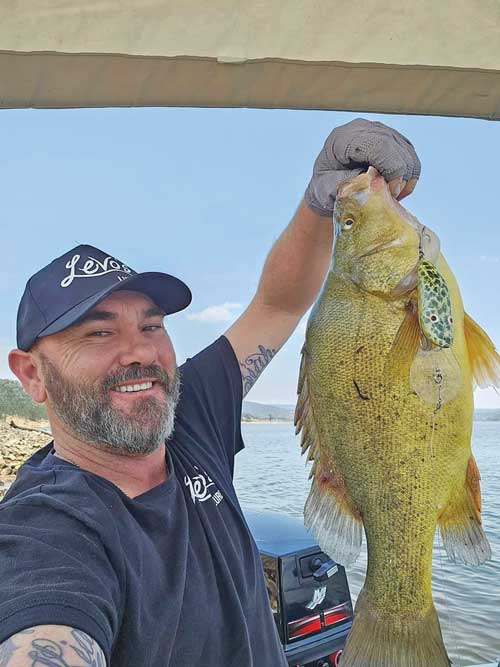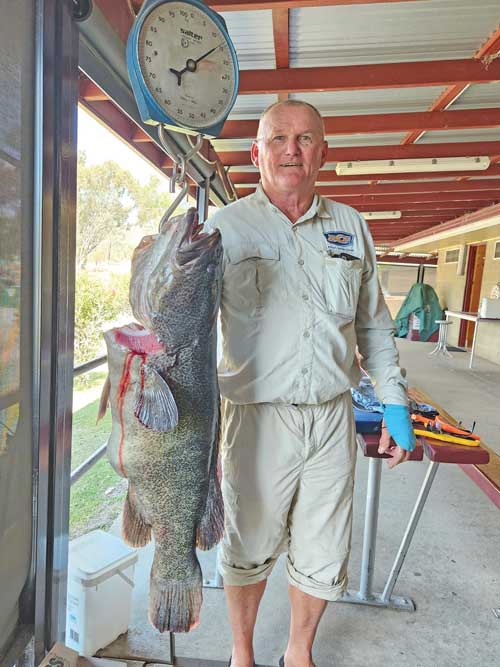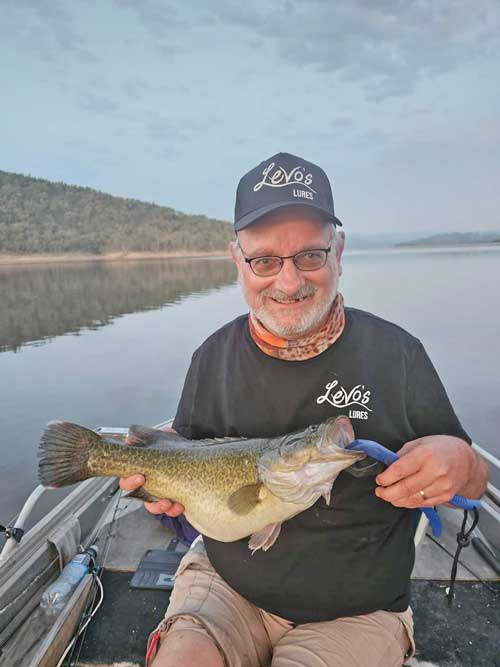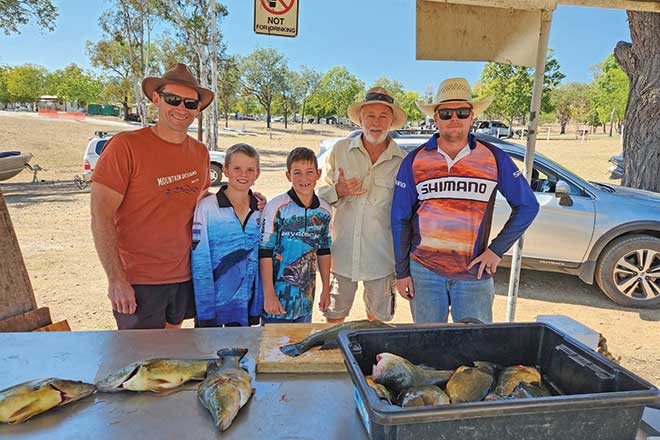For the past five weeks, we have seen a constant flow of water heading downstream to the west.
The releases were small to start with, then went to 1000 megalitres a day, bringing the storage percentage down to 82, as at the time of writing.
This in return saw good numbers of golden perch being caught on bait and lures.
The same took place with silver perch, giving bait a good going over as well as small blades.
Silver perch up to 48cm were being nailed, striking at fast speeds and fighting well, which gave anglers something to think about.
I was able to try a good feed of silvers, and the way to prepare this fish for cooking is to leave the fillets on a plate in the fridge for 24 hours.
Bring out the plain flour, put some into a medium sized bag with salt and pepper, add the fillets and shake until the flesh is covered.
Add about a tablespoon of butter or margarine to a frypan, bring the heat up to medium-hot and cook the fillets until they’re golden – delicious!

With cod, it’s been a little quiet. flow
Though small undersized 25cm models through to legal 97cm fish have been caught.
The release of water has had some effect on cod looking for good nesting sites.
The drop in water makes them move on until they find a set level of stationary water.
During the past month, as you may know, we’ve had fires in the region, so the water-bombing aircraft have been pulling water from the dam each day.
I ask all anglers to keep in mind that it’s tough work for the pilots to get a good straight run to pull water.
So, at all times when on the water, keep to either port (right) or starboard (left) of the centre of all water storages, which will give the planes right of way.
If it were not for these people doing such a fine job, our region would have been burnt out.

We were lucky the entity upstairs was looking after us too, as we received 10-27mm of rain on Friday November 3, which gave us some time to recover from the good flogging the fires gave us.
Each year, I mention how river rock is being used as fireplace enclosures – don’t use it!
When cooling down, these rocks explode or crack apart without warning, causing cuts or small fire outbreaks, leaving people unsure of what to do.
We are not over the bushfire period, in fact, we’re just heading into it, with prime dry and dangerous conditions ahead.
For the next three months, we should all be on bushfire alert.
We haven’t had monsoonal rain and cyclones during December-April for four years.
It must be due soon.
I think the 2024 period could well be the start.
Fish restocking of rivers, streams and water storages is not far off.
Allocations of funds from the permits purchased have arrived and orders are currently being placed for fingerlings.
Though lack of flow is the norm for upstream creeks and rivers at the moment.
Earlier I mentioned storage outflows, so when using canoes or kayaks, keep in mind any flow over 400 megalitres a day in the upper regions below dams will be dangerous.

Cold water, covered logs and tight bends can and will force you into tight situations, which will require some fast thinking or pulling up and floating your water craft down by rope.
No car or truck tubes should be used when these flows are occurring.
One other thing to keep in mind is access to water on large dams.
The bank may look solid and firm but, to date at Glenlyon, five tow-outs have had to be undertaken.
Use the ramps with care and caution.
Check them all out beforehand, even concrete ramps.
Paddle into these to check for cracks or holes that may exist from previous flows.
Also, be advised, if you are caught either pulling up traps and pots that are not yours, or taking bait from these, it will cost you $1475 per trap.
This includes crab and red claw traps.
If you intend on doing it, bring your money with you… as they used to say in the Nock and Kirby ads from years ago.
 Bush ‘n Beach Fishing Magazine Location reports & tips for fishing, boating, camping, kayaking, 4WDing in Queensland and Northern NSW
Bush ‘n Beach Fishing Magazine Location reports & tips for fishing, boating, camping, kayaking, 4WDing in Queensland and Northern NSW









